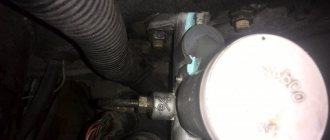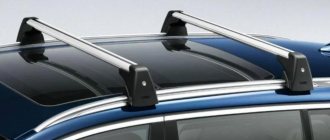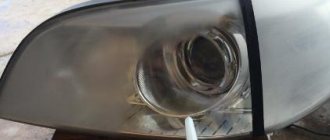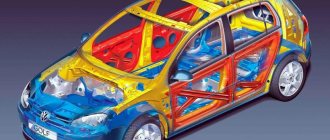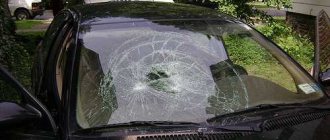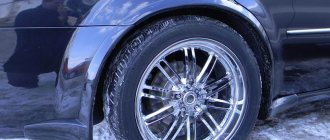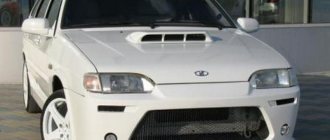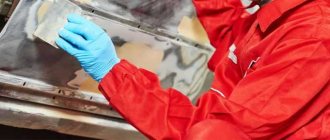There are drivers who drive their cars, but have absolutely no idea what the car is made of. It may not be necessary to know all the intricacies of the complex operation of the mechanism, but the main points should still be known to everyone. After all, the life of both the driver himself and other people may depend on this. At its core, in a simplified form, machines consist of three parts:
- engine;
- chassis;
- body
In the article, we will take a closer look at what parts a car consists of and how they affect the operation of the vehicle as a whole.
What does a car consist of: diagram
The structure of a car can be represented as follows.
In the vast majority of cases, cars are equipped with internal combustion engines. Since they are not ideal, developments have been and are ongoing to invent new motors. Thus, cars with electric motors have recently been put into operation, for charging which a regular outlet is sufficient. The Tesla electric car has become very famous. However, it is certainly too early to talk about the widespread use of such machines.
The chassis, in turn, consists of:
- transmission or power train;
- chassis;
- vehicle control mechanism.
The body is designed to accommodate passengers in the car and move comfortably. The main body types today are:
- sedan;
- hatchback;
- cabriolet;
- station wagon;
- limousine;
- and others.
ICE: types
Any person understands that engine malfunctions can become dangerous to the health and life of people. Therefore, it is vital to know what a car engine is made of.
Translated from Latin, motor means “set in motion.” In a machine, it is understood as a device that is designed to convert one type of energy into mechanical energy.
Internal combustion engines come in several types:
- gasoline;
- diesel;
- gas.
The most commonly used are petrol and diesel options.
In the first case, as the name implies, the fuel is gasoline. After passing through a special system, it enters the intake manifold or carburetor. Then the mixture sprayed there, already containing air particles, enters the cylinders, is compressed by the pistons and is ignited by a spark from the spark plugs.
Gasoline engines come in carburetor and injection types. The first one is almost never used anymore. Engine injection systems are, in turn, mechanical (in which mechanical levers are used as a dispenser, having the ability to regulate the resulting mixture) and electronic (where the composition and injection of fuel is completely carried out by the ECU - an electronic control unit). Since the injector works more carefully, its combustion products are less harmful compared to carburetor ones.
For diesel engines, special diesel fuel is used. This engine does not have an ignition system: when the fuel mixture enters the cylinders, it explodes itself due to the high temperature and pressure generated by the piston group.
Gas engines operate on liquefied, generator-generated compressed gas. Such fuel is stored in cylinders, from where it enters the gearbox through an evaporator and loses pressure. The further process is similar to that of an injection engine. Sometimes, however, the evaporator is not used.
Ignition operating principle
The set of devices responsible for the appearance of a spark at the required moment is called the ignition system and is part of the electrical equipment. Normal operation of a gasoline engine is impossible without an ignition system. There are three main types of ignition systems, similar in principle of operation, but differing in design.
Kinds:
- electronic;
- contact;
- contactless.
Ignition system design
- Power supply
When the car is started, the battery is the power source, after which this function is transferred to the generator (while the engine is running).
- Egnition lock
A device used to transmit voltage.
- Storage device
A device necessary to accumulate the necessary energy. There are induction (in the form of a coil) and capacitive storage devices.
- Energy distributor
The system consists of a block and a switch. The distributor can be electronic or mechanical. Responsible for supplying energy.
- Candle
A porcelain insulator with two electrodes placed close together. Responsible for creating the spark for ignition.
Main stages of ignition operation:
- accumulation and supply of the required charge level;
- high voltage conversion;
- moment of distribution;
- spark formation;
- fuel ignition.
Motor operation
To better understand the principle of operation, you need to understand in detail what a car engine consists of.
The body is the cylinder block. Inside there are channels that cool and lubricate the motor.
A piston is nothing more than a hollow metal glass with ring grooves on top.
The piston rings located at the bottom are oil scraper rings, and at the top are compression rings. The latter provide good compression and compression of the air-fuel mixture. They are used both to achieve tightness of the combustion chamber and as seals to prevent oil from entering there.
The crank mechanism is responsible for the reciprocating energy of the pistons to the crankshaft.
So, understanding what a car consists of, in particular its engine, let’s understand the principle of operation. The fuel first enters the combustion chamber, mixes with air there, the spark plug (in gasoline and gas versions) produces a spark, igniting the mixture, or the mixture ignites itself (in the diesel version) under the influence of pressure and temperature. The formed gases cause the piston to move downward, transmitting movement to the crankshaft, which causes it to rotate the transmission, where the movement is transferred to the wheels of the front, rear axle, or both, depending on the drive. A little later we will touch on what a car wheel consists of. But first things first.
Operating principle of the engine
Engine device:
- the ignition system supplies current to the spark plug to produce a spark;
- the cooling system removes heat from the cylinder walls and heads, preventing engine overheating;
- the power system is responsible for preparing a new portion of the working mixture (fuel + air);
- the gas distribution mechanism is responsible for the timely intake of a new portion of the working mixture and the removal of exhaust gases;
- the crank mechanism converts the (reciprocating) movement of the pistons into rotational movement of the crankshaft;
- The lubrication system is responsible for supplying oil to the rubbing surfaces.
Most cars now use a four-stroke combustion system to convert fuel into energy. For the engine to operate properly, the compression in the cylinders must correspond to values from 11 to 15.
Combustion cycle:
- the fuel-air mixture is admitted (intake stroke);
- the mixture is compressed and ignites (compression stroke);
- the mixture burns and pushes the piston down (expansion stroke);
- combustion products are released (exhaust stroke).
Inside the engine cylinder there is a chamber into which a mixture with air (or separately) is introduced, where fuel combustion occurs. During combustion, thermal energy is converted into mechanical energy. Afterwards, the combustion products are removed from the cylinder, and a new portion of fuel arrives in their place. The combination of these processes is the engine operating cycle.
Operation of transmission parts
The clutch serves to separate the gearbox (Gearbox) from the engine, then smoothly connect them when changing gears and when driving away.
The gearbox changes the torque transmitted from the crankshaft to the cardan shaft. The gearbox unit disconnects the connection between the motor and the cardan drive to the extent necessary to move the vehicle in reverse.
The main function of the cardan transmission is to transmit torque from the gearbox to the main gear at different angles.
The primary function of the final drive is to transmit torque at a ninety-degree angle from the driveshaft through the differential to the drive shafts of the main wheels.
The differential rotates the drive wheels at different speeds when cornering and on uneven surfaces.
Clutch operating principle
The connecting link between the gearbox and the engine, connecting and disconnecting the gearbox input shaft from the crankshaft flywheel is called a clutch. On a manual transmission, gears shift only when the clutch is depressed.
Clutch assembly design:
- pressure plate or “basket”;
- release bearing drive fork;
- release bearing;
- driven disk;
- drive system;
- clutch release pedal.
According to the number of driven discs, the clutch is divided into single-disc and multi-disc.
In the single-disk version, the basket is connected to the flywheel and rotates with it. All rotation is transmitted to the gearbox, since the driven disk contains a splined clutch into which the gearbox shaft enters. To change gear, the driver presses the pedal, which triggers the following processes:
- pressure is transmitted to the clutch fork through the clutch drive system;
- the fork, in turn, moves the release bearing clutch along with it to the basket springs;
- the bearing exerts pressure on the basket legs;
- the paws temporarily disconnect the disc from the flywheel.
When the driver releases the pedal, the bearing separates from the springs and the basket engages with the flywheel.
In double-disc versions, a basket is used that has two working surfaces and two clutch discs. Restrictive bushings and a synchronous pressure adjustment system are located between the working surfaces of the drive disk. The process of disconnecting the flywheel occurs as in a single-plate clutch.
Types of clutch:
- mechanical;
- hydraulic (the most common option);
- electrical;
- single and multi-disc.
Control mechanisms
These devices consist of a steering system that is connected to the front wheels by steering and brakes. Most modern cars use on-board computers, which themselves control the controls in some cases, and even make the necessary changes.
Here we note such an important part as what the car wheel consists of. Without him, the car simply would not have happened. This is truly one of the greatest inventions and consists of two components: a rubber tire, which can be tubed or tubeless, and a metal rim.
General structure of the car
The design of the car is not as complicated as it might seem at first glance. Absolutely any vehicle consists of five main parts - engine, chassis, transmission, body, electrical equipment and control system.
Motor
The engine is the heart of the car, whose task is to convert thermal energy (burnt fuel) into mechanical energy. After which it is transmitted through the transmission to the wheels.
Chassis
Multiple components and assemblies that make the car move are classified as the chassis - axles, wheels and suspension (rear and front).
Transmission
Main components of the transmission:
- main bridge;
- gearbox (gearbox);
- CV joints;
- clutch.
The task of the transmission is to transmit torque to the wheels of the car from the engine shaft.
Electrical equipment and control system
Electrical components:
- battery (battery);
- wiring;
- generator.
The vehicle control mechanism is represented by a steering wheel connected to the front wheels. The steering wheel is used to determine the turning angle and direction of movement of the vehicle. Brakes are another important component of the vehicle control system, responsible for reducing its speed and stopping it completely.
Body
Almost all units and components are attached to the load-bearing part of the car - the body.
Body components:
- spars;
- vehicle roof;
- bottom;
- engine compartment;
- other attachments.
This division is very arbitrary, since all the parts in the car are, one way or another, interconnected.
The design of the vehicle is constantly being improved, increasingly filled with electronics and automation. Manufacturers are working to improve vehicle operating safety, fuel efficiency, and reduce noise levels and exhaust toxicity.
